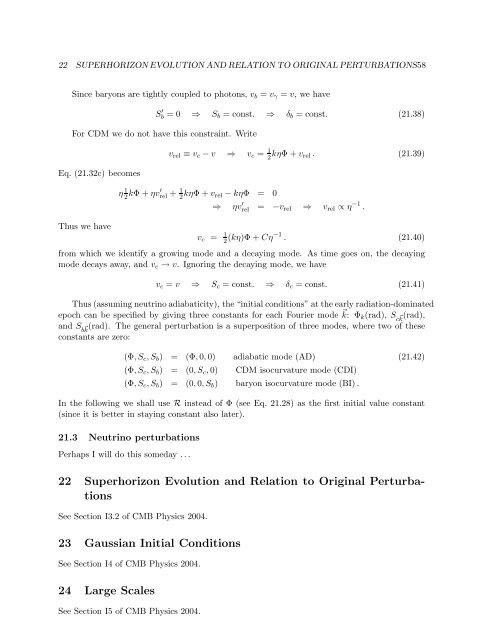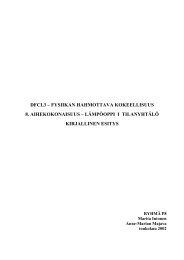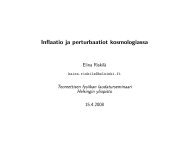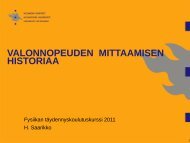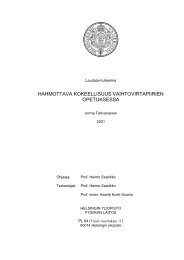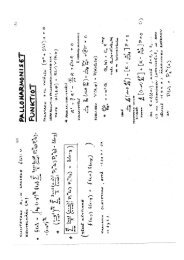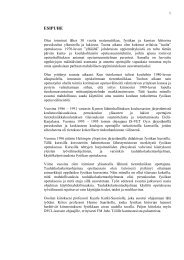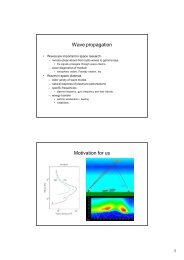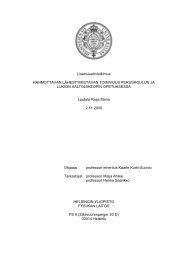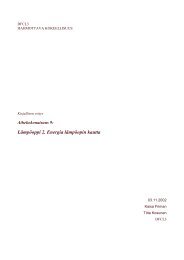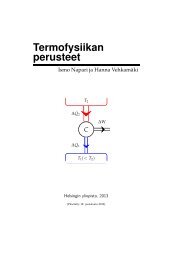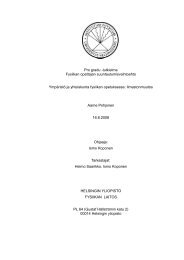Cosmological Perturbation Theory, 26.4.2011 version
Cosmological Perturbation Theory, 26.4.2011 version
Cosmological Perturbation Theory, 26.4.2011 version
You also want an ePaper? Increase the reach of your titles
YUMPU automatically turns print PDFs into web optimized ePapers that Google loves.
22 SUPERHORIZON EVOLUTION AND RELATION TO ORIGINAL PERTURBATIONS58Since baryons are tightly coupled to photons, v b = v γ = v, we haveS b ′ = 0 ⇒ S b = const. ⇒ δ b = const. (21.38)For CDM we do not have this constraint. Writev rel ≡ v c − v ⇒ v c = 1 2 kηΦ + v rel . (21.39)Eq. (21.32c) becomesη 1 2 kΦ + ηv′ rel + 1 2 kηΦ + v rel − kηΦ = 0⇒ ηv rel ′ = −v rel ⇒ v rel ∝ η −1 .Thus we havev c = 1 2 (kη)Φ + Cη−1 . (21.40)from which we identify a growing mode and a decaying mode. As time goes on, the decayingmode decays away, and v c → v. Ignoring the decaying mode, we havev c = v ⇒ S c = const. ⇒ δ c = const. (21.41)Thus (assuming neutrino adiabaticity), the “initial conditions” at the early radiation-dominatedepoch can be specified by giving three constants for each Fourier mode ⃗ k: Φ k (rad), S c ⃗ k(rad),and S b ⃗ k(rad). The general perturbation is a superposition of three modes, where two of theseconstants are zero:(Φ,S c ,S b ) = (Φ,0,0) adiabatic mode (AD) (21.42)(Φ,S c ,S b ) = (0,S c ,0)CDM isocurvature mode (CDI)(Φ,S c ,S b ) = (0,0,S b ) baryon isocurvature mode (BI) .In the following we shall use R instead of Φ (see Eq. 21.28) as the first initial value constant(since it is better in staying constant also later).21.3 Neutrino perturbationsPerhaps I will do this someday ...22 Superhorizon Evolution and Relation to Original <strong>Perturbation</strong>sSee Section I3.2 of CMB Physics 2004.23 Gaussian Initial ConditionsSee Section I4 of CMB Physics 2004.24 Large ScalesSee Section I5 of CMB Physics 2004.


